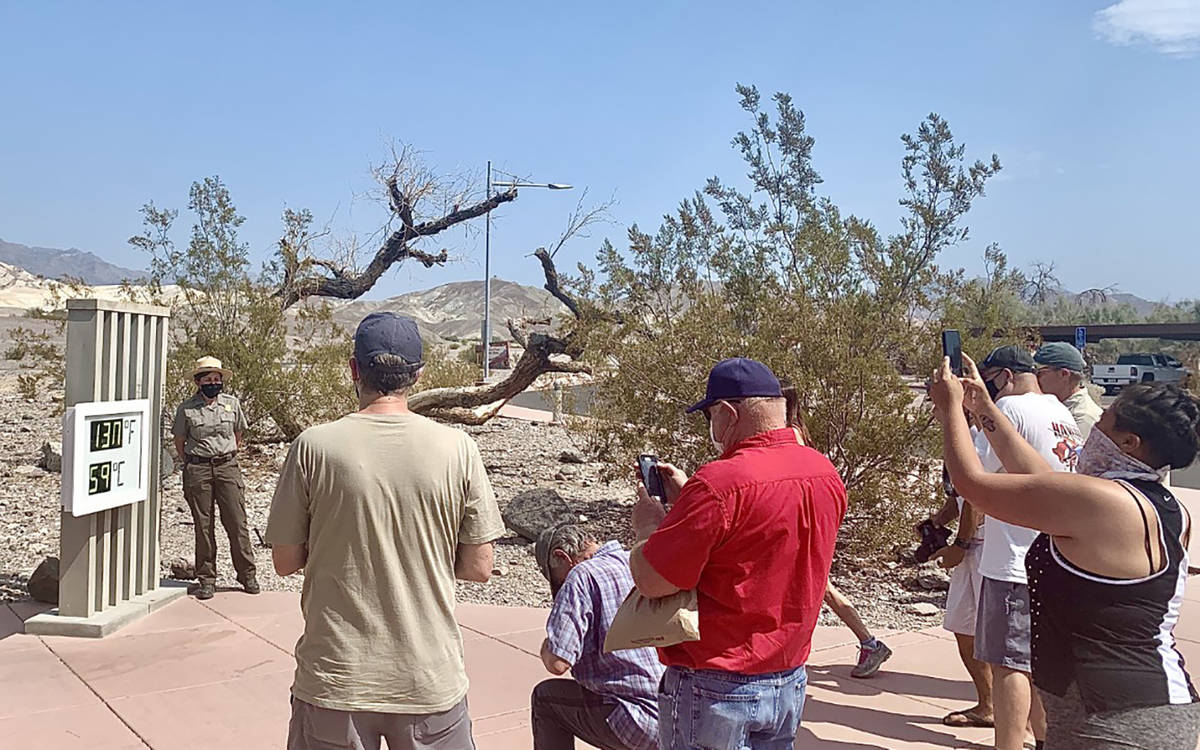Heat records set in Death Valley in June, more heat forecast for weekend
Excessive heat continues across Nye and Esmeralda counties and in Death Valley National Park through the weekend, with high temperatures soaring to near record levels.
The National Weather Service put out an excessive heat warning that began Wednesday, where high temperatures in Pahrump hit well into the triple digits. That trend continues on Friday with a high temp of 112 forecast for Pahrump and an overnight low of 85 degrees.
Then on Saturday and Sunday, high temperatures could reach 115 in Pahrump and even higher for destinations such as Death Valley National Park.
The high temp forecast for Furnace Creek is 128 degrees for Saturday and Sunday. According to data from the weather service, the temperatures will be 10 to 15 degrees above normal for the time of year, but it’s not unprecedented.
On Aug. 16, 2020, the high temperature at the visitors center hit 130 degrees, though it’s still not official. If confirmed, that would be the hottest temperature recorded since July 1913, according to Death Valley National Park.
Death Valley’s high temperature to beat, though, is the 134-degree mark set at Death Valley’s Greenland Ranch on July 10, 1913.
Hottest June on record
The average day-night temperature was 102.9 degrees in June for Death Valley National Park, making it the hottest June on record.
“The normal average June temperature is 95.0°F, for records extending back to 1912,” according to a release from the park. “Every June for the past decade has exceeded this average. June 2021 beat the previous record by 1.1°F.”
The heat wave that hit parts of the U.S., that put cities such as Portland and Seattle into the triple digits, brought a peak temperature on June 17 of 128 degrees for Death Valley. This broke the previous daily record by six degrees.
The overnight lows for Death Valley did not bring relief from the heat, according to the park.
“On June 29, the lowest temperature was 104°F around 3 a.m.,” Death Valley National Park stated in a release.
Death Valley’s landscape causes the area to be hotter than it is in places such as Pahrump, Lone Pine and other communities. The landscape ranges from 282 feet below sea level to 11,049 feet above sea level.
“Clear, dry air, and minimal plant coverage means there’s little to block the sun from heating up the ground,” the park states. “Heat radiates from the ground back into the air. Hot air rises, but is trapped by the steep mountains, and recirculates to the valley floor, part of which is 282 feet below sea level. Then the heating continues.”
Park rangers suggest several ways to visit the park safely when temperatures get into the triple digits: “Limit heat exposure by not walking more than five minutes from an air-conditioned vehicle. Travel on paved roads where your vehicle will be found in case of a breakdown.”
In most areas of the park, there is no cell service and rescues are not always possible, as rangers can’t “safely work for extended periods in the heat and helicopters cannot get sufficient lift at high temperatures,” the park states.
Death Valley National Park is the homeland of the Timbisha Shoshone and preserves natural resources, cultural resources, exceptional wilderness, scenery, and learning experiences within the nation’s largest conserved desert landscape and some of the most extreme climate and topographic conditions on the planet.
For more information, head to www.nps.gov/deva
Contact Pahrump Valley Times Editor Jeffrey Meehan at jmeehan@pvtimes.com

















